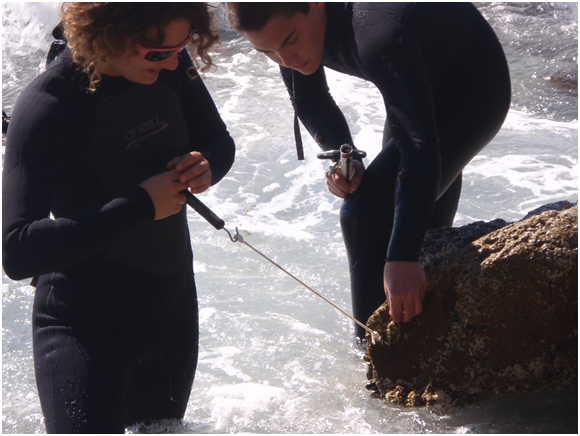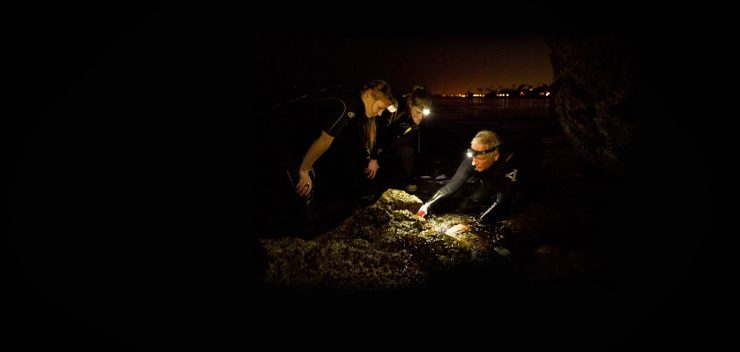When I was a doctoral student at Scripps Institution of Oceanography three decades ago, my academic world started revolving around a tiny creature of the intertidal zone — the limpet. Now that I’m a Chapman University professor, I never expected that these enigmatic sea snails would also become my partners in interpretive dance.
That leap came just last April, when Chapman dance professor Robin Kish asked me to collaborate with her in making a dance out of my Ph.D. research. A dance? Really?
Combating my skepticism, she sent me a URL from a TED talk by scientist and author John Bohannon that implored scientists — ALL scientists — to abandon PowerPoint talks and instead use dance to explain their science.
Wow. Robin and her sidekick, Chapman alumnus and adjunct dance professor Jenny Backhaus, came over for dinner, along with Michael Nehring from the Department of Theatre (an old friend who suggested me to Robin in the first place). To kick off the discussion, I described the plight of the blind, territorial limpet, how it can plow intruders off its territory with surprising ferocity, and that sometimes small limpets can “raid” the territory of larger rivals, then turn on a dime and high-tail it back to their home rock without a confrontation.
I further explained how a friend and I devised tests to investigate how these behaviors formed in the first place. How did the little limpet know it was intruding and needed to flee? How did it know it was on its home scar and needed to fight to protect it?
We guessed that they “learned” these behaviors, and to test that hypothesis, we sought to train the limpets. We brought them into the lab and gave each a small territory on a “water table.” Each time we touched our subject with another limpet, we waited for the subject to fight or flee. Once it chose a behavior, we gave it one of two experiences. “Victory” meant letting the subject push our bait limpet right off its territory. “Defeat” meant that we pushed against our subject with the bait limpet as similarly to natural territorial behavior as we could muster.

These experiments were messy and awkward, but the subjects responded beautifully. Victorious limpets soon developed strong territorial behavior. The vanquished ran away just as we had observed in the field. These findings became a chapter of my dissertation. Behavioral ecologists and neuroethologists are interested in aggression from an evolutionary and neural perspective. My findings found a place in that literature.
After hearing me detail my research, Robin described how dance could illustrate it. And the dance of the limpets was born.
Over the next few weeks, I described limpet behavior, she described dance and narrative. Robin’s students were recruited to perform the dance, and after some rehearsal we were ready to film. One of the requirements of the “Dance Your Ph.D.” process (it’s kind of a contest, sponsored by the journal Science) is that the author actually be in the dance. I was, but oh how clumsy it felt.
My clumsiness aside, the dance process was riveting. Even though we didn’t win the contest, I think the piece catches the behavior of these amazing limpets really well. And nobody gets wet!
Originally, I thought of this “Dance Your Ph.D.” exercise as a collegial, fun thing to do, but I didn’t think I would learn much. I was wrong. If you look at the dancers’ smooth, beautiful movements, and my awkward, albeit earnest, ones, you actually see a metaphor of science. These dancers are nature, in all her grace and beauty. That beauty is in stark contrast to the clumsiness, even silliness, of scientists like me, as we attempt the inquisitive dance to reveal how nature works. Indeed, the greatest testimony to nature’s grace is that every now and then she allows our clumsy efforts to reveal her hidden truths.
>>MORE: Watch Dr. William Wright explain his research, how he challenges his students through a combination of lecture, field work — when he takes them “limpet wrastlin'” — and then back to the lab.





Can you leave this up permanently? It’s awesome.